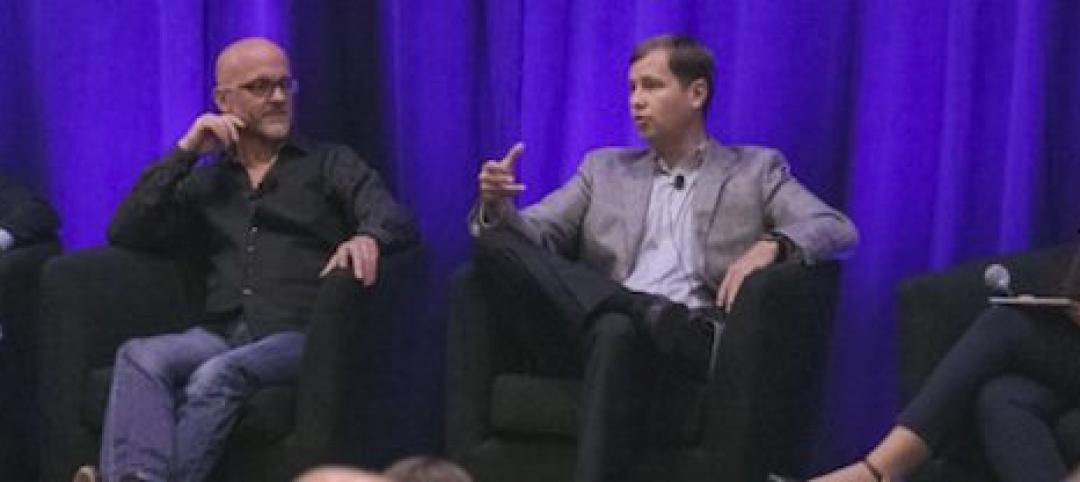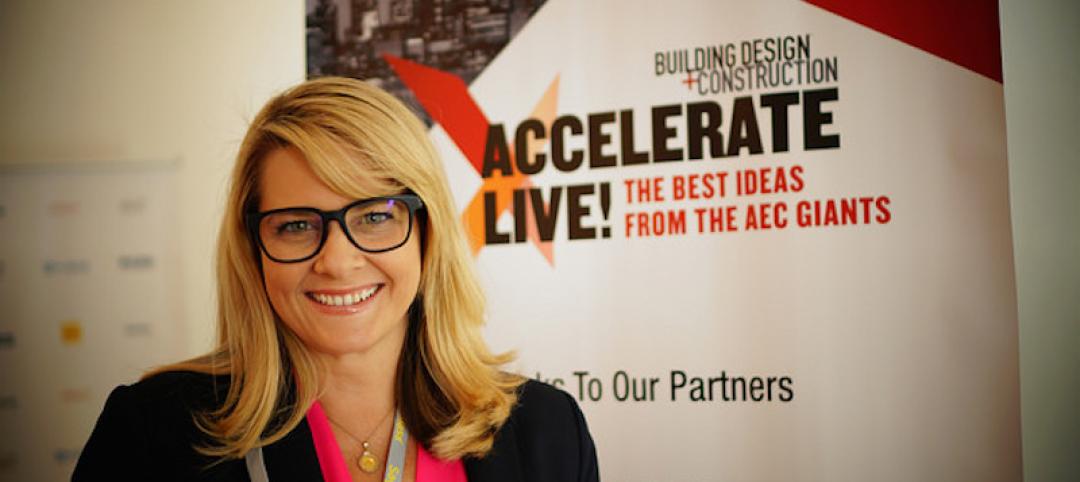In part one of this series, I shared some insights gained from Paul Nunes and Larry Downes’ article, The Five Most Disruptive Innovations at CES 2016. While identifying key tech trends we should keep our eye on this year, they dropped this thought-bomb: “Smart incumbents seeing the inevitable will position themselves for flexibility, becoming virtual platforms that allow their core expertise to be quickly redeployed to new business with new partners.”
So what does this mean for the AEC industry?
It’s long been said that the building and design industry is ripe for disruption. And within the last 5–6 years, we’ve seen significant movement away from siloed, paper-based workflows to digitally collaborative projects that enable all stakeholders to access well-maintained and centralized project documents, including images, RFIs, progress reports, submittals and drawings in 2D or 3D. This solves one of the most basic challenges plaguing the industry: providing accurate, up-to-date information when and where it’s needed most.
But how do we push these innovations even further into the project lifecycle? And how do we ensure we’re not making short-term gains while compromising longer-term, sustainable, platform-based change?
Many of the business leaders I speak to today find themselves in a tough position. They want to stay current with technology, but they’re concerned the app market isn’t mature enough to go “all in” from an enterprise standpoint. A very real problem doesn’t always benefit others upstream or downstream as the technologies can’t “talk” to each other. This leaves many businesses in a state of perforated success, with pockets of innovation struggling to connect in order to gain the promised efficiencies.
Do traditional tech adoption rules still apply?
Accenture, the global professional services company, has coined a term for this new phenomenon. They call it the Big-Bang Disruption. They’ve even created a short overview video to explain how new startups are able to come to market quickly and cheaply, disrupting a specific part of a workflow. This is something we’ve seen a lot of within the AEC industry over the last few years. Unlike traditional technology adoption models, which allows time for a product to evolve as it gains adoption, the Big-Bang Disruption model shows that the migration from “trial users” to “vast majority” is represented in a meteoric rise, otherwise known as the shark fin model of disruption.
This can mean that the outlook for creating mature, long-term solutions that work together is not that good; the timeframe for adoption is so compressed, it doesn’t allow for true platforms to emerge. Everything in this model becomes a point solution, with all the risks and inefficiencies that come with that piecemeal solution model.
 Photo Courtesy of HBR.ORG
Photo Courtesy of HBR.ORG
To app or not to app…that is the question.
This year more than ever, it’s become clear that apps have made their way into mainstream business. In fact, whether you know it or not, I’m sure there are apps being used within your offices and on your projects that are supplementing your core systems.
What may separate the tech winners from the losers in today’s market is the ability to transform the energy from the meteoric rise into a well-positioned platform—one that can successfully integrate with other solutions to serve a larger ecosystem. Delivering on the promise of system integration allows a company to stave off the risks associated with rapid release cycles and relentless competition. Without the sustenance provided by an ecosystem, it’s far too easy to burn through resources and to dive headlong into roadmap sludge, allowing the competition to jockey for position.
How to avoid target fixation.
And this brings up the real challenge. Business leaders and influencers need to continually focus on both their present and future needs, as well as macro and micro views of business and the industry at large, and resist the temptation to avoid disruption altogether because of the failure of many apps to deliver on the implied promise of integration. Without this simultaneous macro and micro focus, early adopters risk being sidelined by short-term distractions and ending up with isolated solutions, rather than a true platform that supports those individual solutions.
It’s going to take an ecosystem of the right disruptors, including tech vendors, owners and users-in the field, to help us navigate the complexities that make up the AEC industry. It’s going to take insightful leadership, and a keen understanding of our industry’s multi-faceted workflows to implement solutions that can work together to leverage their incremental efficiencies to deliver on the promised value of disruption. Let’s hope Nunes and Downes are right when they say, “If you launch enough particles, you may just get fission."
More from Author
Sasha Reed | Dec 15, 2017
Future vs. current state of construction innovation: How will we make the leap?
Looking beyond today’s constraints to the possibility of what “could be” is a key characteristic of those defining and delivering innovation to design and building firms across the globe.
Sasha Reed | Sep 19, 2017
BIM vs VDC…how the US and the UK differ in approaching digital project delivery
In this four-part series, Bluebeam VP Sasha Reed sat down with industry experts to examine the need for defining and understanding digital workflows and data management throughout the design and construction project lifecycle.
Sasha Reed | Jul 19, 2017
Introducing StrXur by Bluebeam
Our goal is to present unique perspectives you may not be able to find anywhere else.
Sasha Reed | Jul 13, 2017
Defining the future by mastering the art of change
From my perspective, what separates organizations thriving in the digital revolution from those who are not boils down to one thing: leadership.
Sasha Reed | Mar 15, 2017
Incentivizing change: Show me the money
Who is succeeding, and on what terms? And what will it take for everyone to experience the benefits of that success?
Sasha Reed | Oct 4, 2016
The talent shortage: Will the training the AEC industry desperately needs arrive in time?
As the construction industry bounces back from the Great Recession, an entirely new class of tech-savvy construction professionals has been created, and the supply of these highly skilled, tech-proficient pros has been quickly exhausted.
Sasha Reed | Jul 11, 2016
Construction Disruption at AECX: Technology, hackathons and the promise of change in LA
The lead up to AECX featured a discussion providing insight into the current state of the AEC technological revolution by exploring opportunities, challenges and choices AEC pros face.
Sasha Reed | Jun 23, 2016
Implementing Change: The Five Biggest Mistakes to Avoid
Two truths from the jobsite: 1) The best part about uncovering a problem is discovering its solution, and 2) The worst part about discovering the solution is implementing it.
Sasha Reed | Dec 17, 2015
How is the Value of VDC for Design Management Translating Outside the US?
Sascha Vesterlund, a VDC Specialist, Design Processer with MT Højgaard, and Nathan Wood, Innovation at DPR Construction, shared their perspectives on VDC















